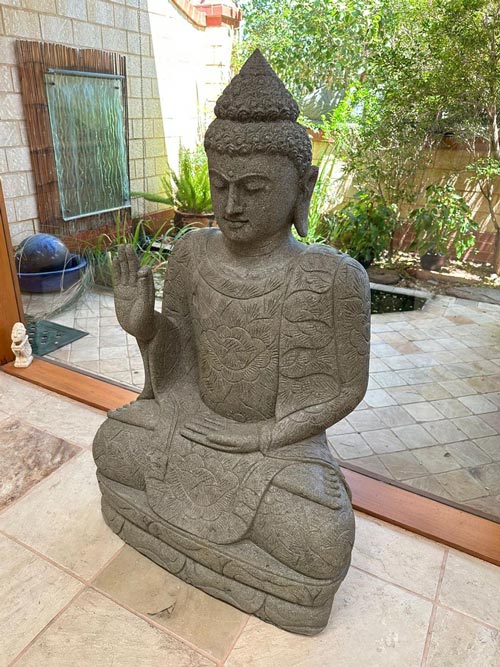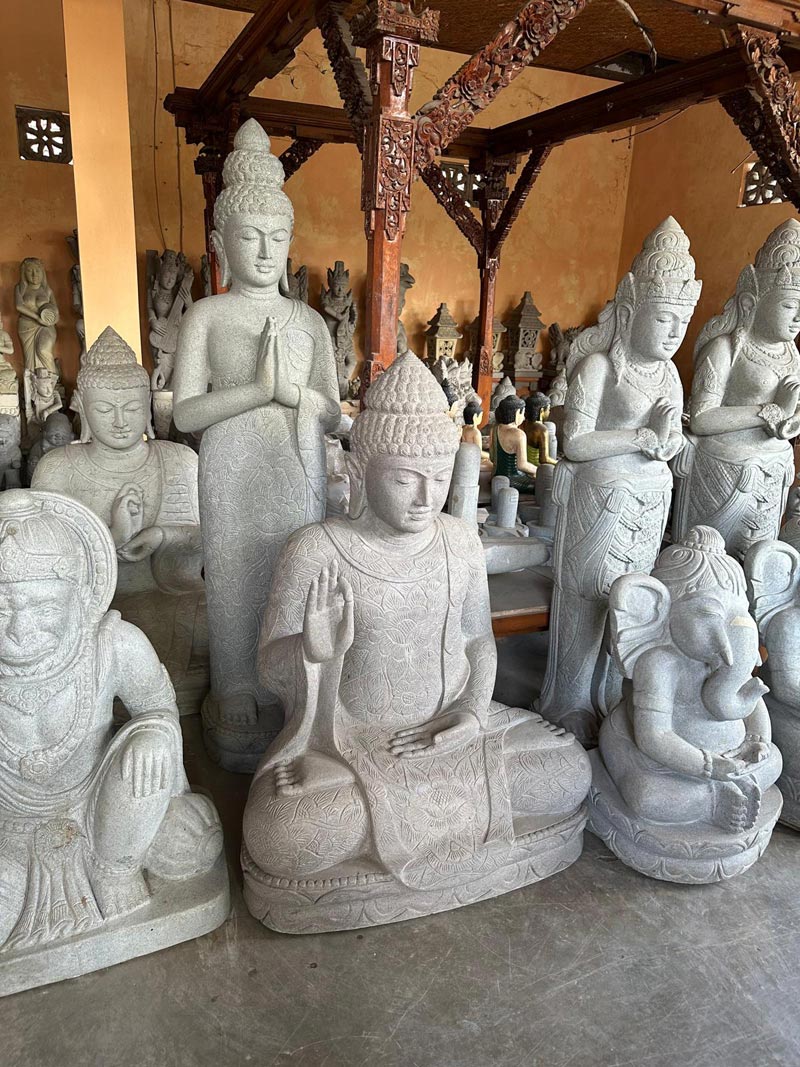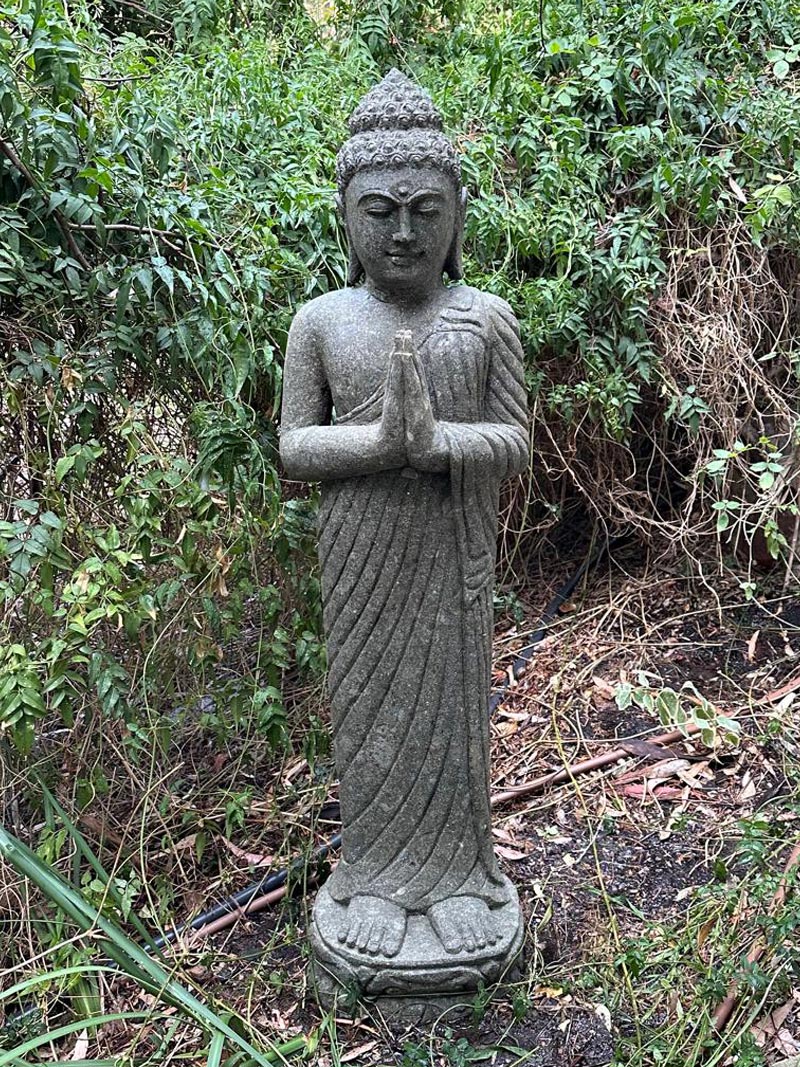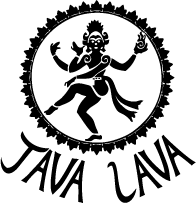
Standing Buddha
Standing Buddha statues can have many meanings depending on which culture the Buddha comes from and more specifically on its Mudra or hand position gestures, which can symbolise grace, protection, blessings, determination and peace. The Standing Buddha’s firm stance primarily signifies Buddha’s steadfastness in guiding beings towards enlightenment.
Standing Buddhas often depict the Buddha after attaining enlightenment, standing firmly with two feet on the ground, radiating determination, calm and pacification.
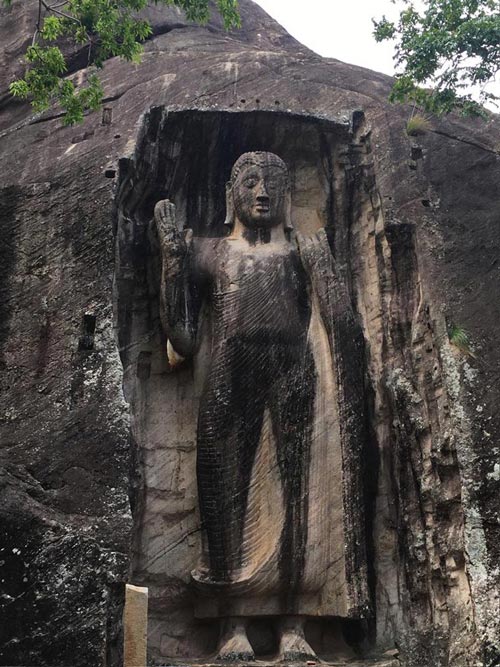
Standing Buddha Carved into hill side, Sri Lanka, Photo by Brett Craig 2017
Standing Buddha Hand Gestures known as Mudras are varied and complex, some better-known ones are:
Abhaya Mudra represents the dispelling of fear, with one hand raised signifying protection, courage, reassurance, compassion and peace.
Varada Mudra represents the Granting of Wishes or “boon-granting” this hand gesture represents generosity, compassion, and the offering of blessings, often depicted with the hand extended downward, palm outward, and fingers slightly relaxed.
Standing Buddha with both hands raised can refer to times when the Buddha repelled a flood or stopped his relatives from fighting.
Other mudras can symbolize various aspects of the Buddha’s teachings and actions, such as appealing to reason, accepting charity, or representing his first sermon.
Standing Buddha
Standing Buddha statues can have many meanings depending on which culture the Buddha comes from and more specifically on its Mudra or hand position gestures, which can symbolise grace, protection, blessings, determination and peace. The Standing Buddha’s firm stance primarily signifies Buddha’s steadfastness in guiding beings towards enlightenment.
Standing Buddhas often depict the Buddha after attaining enlightenment, standing firmly with two feet on the ground, radiating determination, calm and pacification.
Standing Buddha Hand Gestures known as Mudras are varied and complex, some better-known ones are:
Abhaya Mudra represents the dispelling of fear, with one hand raised signifying protection, courage, reassurance, compassion and peace.
Varada Mudra represents the Granting of Wishes or “boon-granting” this hand gesture represents generosity, compassion, and the offering of blessings, often depicted with the hand extended downward, palm outward, and fingers slightly relaxed.

Standing Buddha Carved into hill side, Sri Lanka, Photo by Brett Craig 2017
Standing Buddha with both hands raised can refer to times when the Buddha repelled a flood or stopped his relatives from fighting.
Other mudras can symbolize various aspects of the Buddha’s teachings and actions, such as appealing to reason, accepting charity, or representing his first sermon.
